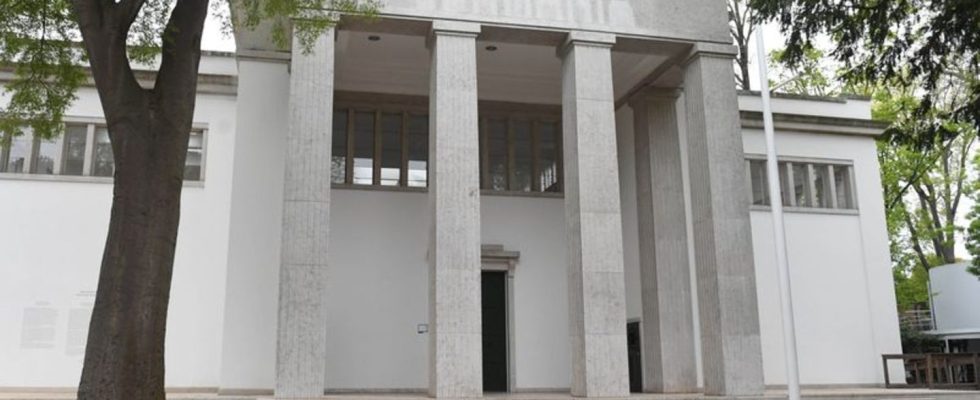Art
German Pavilion with Bartana and Moon Day in Venice
The German Pavilion in Venice. photo
© Felix Hörhager/dpa
In times of war and crises, the cultural scene is also shaken. Dealing with this is the focus of the German Pavilion at the Venice Art Biennale.
The Venice Art Biennale takes place from April 20th to November 24th. Along with the documenta in Kassel, it is considered the most important presentation of contemporary art and attracted more than 800,000 people to the lagoon city for the most recent edition two years ago. The 60th edition, entitled “Stranieri Ovunque – Foreigners Everywhere”, will focus primarily on migration, exile and experiences of foreignness.
In the German pavilion in the Giardini, history and the future will be told from the perspective of various artistic positions under the title “Thresholds”, according to the responsible institute for foreign relations. “The artistic contribution to the German Pavilion explores how to deal with thresholds, steps and boundaries in three scenarios.”
Longing for collective redemption
Bartana wants to use her work to look for possibilities for future survival on the threshold of a present that is perceived as catastrophic. The artist, who was already present at the documenta in 2007 and designed the Polish pavilion during the Biennale in 2011, deals with themes such as national identity, trauma and displacement in films, installations, photographs and performances. For her first exhibition of works, “Redemption Now” at the Jewish Museum Berlin in 2021, she addressed the longing for collective redemption after fears experienced together with “Malka Germania” (Hebrew for Queen Germania).
Mondtag’s part is intended to contrast the monumental character of the pavilion designed during the Nazi era with “a fragmentary, seemingly small narrative.” Mondtag, born Ersan Aygün in Berlin with a Turkish migrant background, works with the means of theater, music, performance and installation. With his productions he became a shooting star in the theater scene. He realized, for example, Sibylle Berg’s “Hate Triptych – Ways out of Crisis” at the Vienna Volkstheater, Bertolt Brecht’s play “Baal” and Thomas Köck’s theater adaptation “Wagner – the Ring of the Nibelung” at the Berliner Ensemble. His version of Rued Langgaard’s opera “Antikrist” at the Deutsche Oper Berlin was also celebrated.
Artists want to overcome thresholds
In addition to the two positions in the pavilion, a third scenario will be created on La Certosa. “By stepping outward, Thresholds focuses on the significance of the threshold as a moment of temporal and spatial transitions,” says the Institute for Foreign Relations responsible for the German contribution. Akstaller, L’Huillier, Lippok and Werner want to emphasize “the idea of overcoming thresholds”.
Curator Ilk explained the selection of artistic positions. “In a time of global crisis and wars, we asked ourselves the question: What do places of cohesion look like? How can we leave the nation-state-driven thinking and spatial construct?” said Ilk to the German Press Agency in Berlin.
“If there is such a thing as hope, then it lies in crossing thresholds,” says Ilk. In the German contribution, artists of different origins and backgrounds worked “on the confusion of supposed certainties”. The curator continued: “We are on the threshold. Nothing is certain. Can we make this an honest moment of humanity?”

